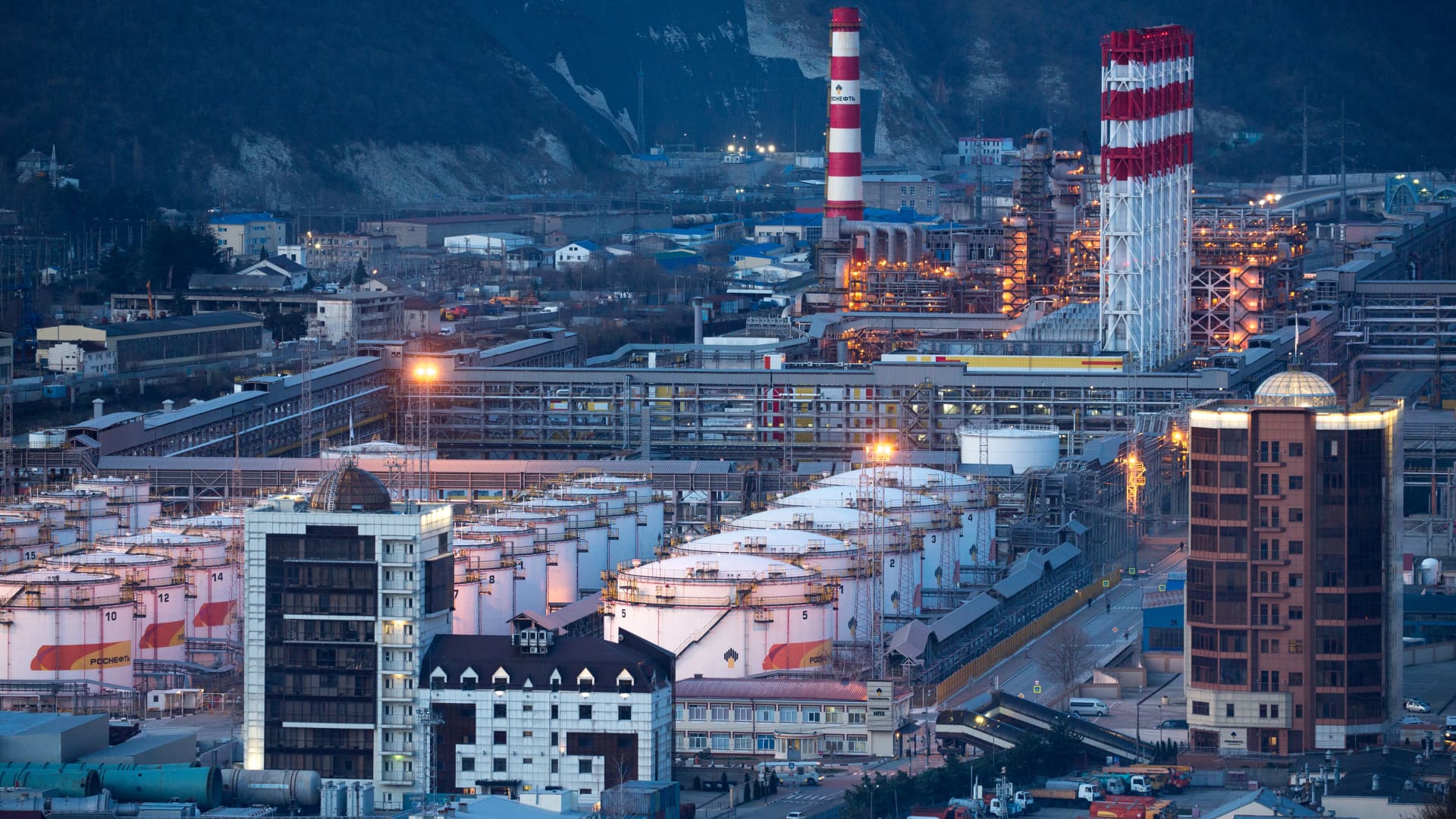Oil prices surge 8% after OPEC’s surprise output cuts; analysts warn of $100 per barrel

Oil storage tanks stand at the RN-Tuapsinsky refinery, operated by Rosneft Oil Co., at night in Tuapse, Russia.
Andrey Rudakov | Bloomberg | Getty Images
Oil prices surged as much as 8% at the open after OPEC+ announced it was slashing output by 1.16 million barrels per day.
Brent crude futures last jumped 5.07% to $83.95 a barrel on that news, and U.S. West Texas Intermediate crude futures soared 5.17% to $79.59 a barrel.
The voluntary cuts will start from May to end 2023, Saudi Arabia announced, saying it was a “precautionary measure” targeted toward stabilizing the oil market.
The move comes on the back of Russia’s decision to trim oil production by 500,000 barrels per day until the end of 2023, according to the country’s Deputy Prime Minister Alexander Novak.
Other member states have also pledged respective cuts, with OPEC Kingpin Saudi Arabia reducing 500,000 barrels per day and UAE cutting 144,000 barrels per day, amongst other cutbacks from Kuwait, Oman, Iraq, Algeria and Kazakhstan.
“OPEC+’s plan for a further production cut may push oil prices toward the $100 mark again, considering China’s reopening and Russia’s output cuts as a retaliation move against western sanctions,” CMC Markets’ analyst Tina Teng told CNBC.
The logo of the OPEC is pictured at the OPEC headquarters on October 4, 2022. In October last year, the oil cartel announced its decision to cut output by two million barrels per day.
Joe Klamar | Afp | Getty Images
Teng noted, however, that the cut could also reverse the decline in inflation, which would “complicate central banks’ rate decisions.”
In October last year, the oil cartel announced its decision to cut output by two million barrels per day. The White House said at that time that President Joe Biden was “disappointed by the shortsighted decision by OPEC+” to cut production quotas while the world was still grappling with the war in Ukraine.
“However, unlike [the cut in October], the momentum for global oil demand is up, not down with a strong China recovery,” Goldman Sachs said in a note.
That could nudge up Goldman’s Brent forecasts by $5 per barrel to $95 per barrel for December 2023, the investment bank said in a note after the surprise decision overnight.
Analysts led by Daan Struyven from Goldman Sachs said the surprise cut is “consistent” with OPEC+’s doctrine to act preemptively.
In March, oil prices tumbled to its lowest since December 2021, as traders feared the banking rout could dent global economic growth.
The oil cartel and its allies are looking to avoid a repeat of the 2008 crash, one analyst said.
“They’re looking into the second half of this year and deciding they don’t want to relive 2008,” said Bob McNally, president of Rapidan Energy Group, citing oil prices crashing from $140 to $35 in six months in that year.
McNally added that while it’s not his base case, oil prices could “make a dash for $100 … if Chinese demand goes back to 16 million barrels a day second half of this year [and] if Russian supply starts to go off because of sanctions and so forth.”